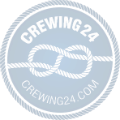
OCTOBER 4, 2013 — Setting its sights on competitive slot cost, United Arab Shipping Company (UASC) , one of the world's fastest growing container carriers, has ordered five 14,000 TEU vessels with six options and five 18,000 TEU vessels with one option from shipbuilder Hyundai Heavy Industries (see earlier story).
Constructed to DNV class, the designs have been optimized through a productive co-operation between FutureShip, a GL company, and Hyundai Heavy Industries (HHI).
Recognizing that fuel consumption is perhaps the single most important factor determining the profitability of new vessels, UASC partnered with FutureShip — a design and energy efficiency consultancy — to realize the most efficient design possible.
A number of designs were assessed based on their total costs of transport per container-mile for UASC's specific trading pattern, taking into account both capital investment and operational costs.
Four sets of designs were shortlisted for intensive evaluation by FutureShip with numerical tank towing tests based on Computational Fluid Dynamics (CFD) simulations for the ship with propeller.
In only four weeks, FutureShip ran thousands of tests to determine the speed-power relationship for the two ship classes at two drafts for each of the four competing designs. The use of massively parallel computation allowed multiple tests to be run at the same time, over speed and draft ranges that reflected realistic operational profiles.
The four designs were all well matched, with HHI's design emerging as the winner. Its 14,000 TEU vessel design outperformed the competition and its 18,000 TEU was the most efficient (single-skeg) vessel.
Taking these designs as the starting point, UASC, HHI and FutureShip joined forces to further optimize them. A formal parametric optimization was also conducted to fine-tune vessel performance for UASC's operating profile in the intended service pattern of the ships.
FutureShip's dedicated parametric optimization employed more than 60 free parameters with the objective of reducing fuel consumption as much as possible, taking into account hydrodynamic power requirements, the specific fuel oil consumption of the respective engines and UASC's specific operational profile for speed-draft combinations.
In a joint effort, HHI and FutureShip revisited the powering concept and more than 35,000 hull shape variants were investigated for each hull design. As a result, better performance could be achieved for both the 14000TEU and the 18000TEU vessels compared to the initial proposal.
For final validation, professional model tests were conducted at the Hamburg Ship Model Basin. The model tests backed up FutureShip's CFD predictions, supporting the accuracy of the optimization results.
To realize further efficiency gains on the operational side, UASC also decided to implement FutureShip's trim solution, "ECO-Assistant." Backed up with a comprehensive database of possible operational conditions evaluated by CFD analysis, this tool provides an intuitive interface to select the most efficient trim for every voyage.
The new ship designs are currently being finalized at HHI with deliveries scheduled between 2014 and 2016, including all options.
![[ad-side]](http://www.crewing24.com/ad_images/105_banner.jpg)
![[ad-side]](http://www.crewing24.com/ad_images/85_banner.jpg)
![[ad-side]](http://www.crewing24.com/ad_images/48_banner.jpg)
![[ad-side]](http://www.crewing24.com/ad_images/65_banner.jpg)
![[ad-side]](http://www.crewing24.com/ad_images/107_banner.jpg)
![[ad-side]](http://www.crewing24.com/ad_images/87_banner.png)
![[ad-side]](http://www.crewing24.com/ad_images/86_banner.png)
![[ad-side]](http://www.crewing24.com/ad_images/79_banner.jpg)
![[ad-side]](http://www.crewing24.com/ad_images/80_banner.jpg)
![[ad-side]](http://www.crewing24.com/ad_images/106_banner.jpg)